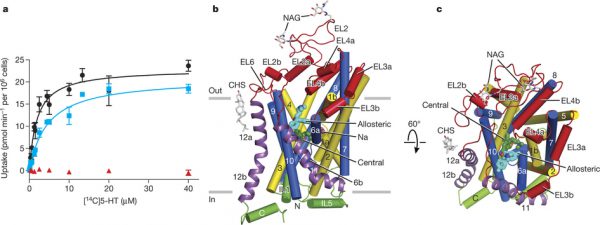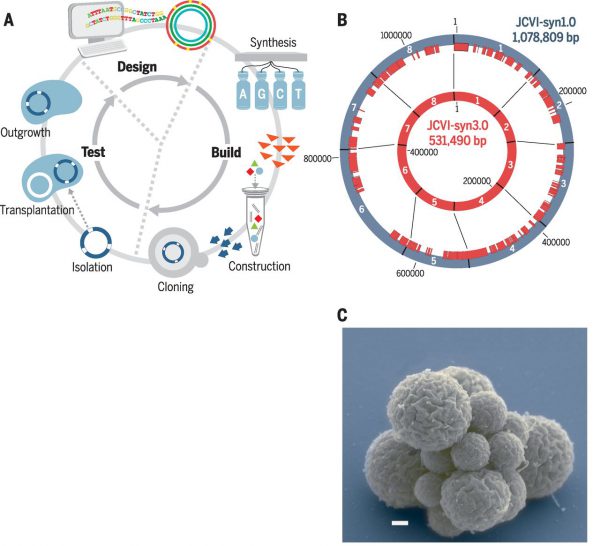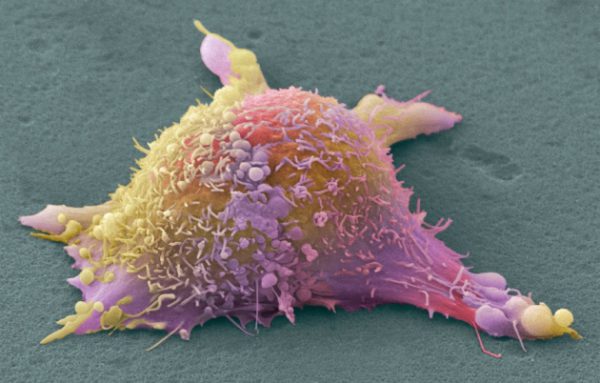Nowadays, precision medicine has become one of the hot topics in our daily life. Researchers want to treat some diseases according to the information of genes that the patient have in a more efficient way. Do you want to know the opinions of researchers about precision medicine? Here we share an article from nature.com (Nature/ doi:10.1038/nature.2016.19801). The full text is followed: It is precision medicine taken to the extreme: cancer-fighting…
JAK2 Inhibitors Target Aggressive Breast Cancers
Janus kinase 2 (commonly called JAK2) is a non-receptor tyrosine kinase. It is a member of the Janus kinase family and has been implicated in signaling by members of the type II cytokine receptor family (e.g. interferon receptors). Here we’d like to share a latest research about JAK2 gene in breast cancer. This article comes from www.sciencemag.org and www.ScienceTranslationalMedicine.org and you can get all detail from these sites. what’s more,…
Antidepressant Target-Serotonin Transporter Reveals Its Shape

Prozac and its kin — drugs called selective serotonin reuptake inhibitors (SSRIs) — were first discovered in 1972. They address one hallmark of depression: low levels of the molecule serotonin, which neurons use to signal one another. By preventing a protein called serotonin transporter (SERT) form absorbing the serotonin back into neurons that release it, the drugs boost serotonin levels in the junctions between cells. It is exciting that the…
A Collective Route to Metastasis: Seeding by Tumor Cell Clusters
Metastasis is the one of the biggest challenges in cancer therapy. Here we share part of a latest article which discusses the nature of the tumor cells that give rise to metastases by Kevin J. Cheung and Andrew J. Ewald. The origin of this article is Science 08 Apr 2016: Vol. 352, Issue 6282, pp. 167-169 (DOI: 10.1126/science.aaf6546) where you can get the full article. Also Creative Biomart provides molecular tools…
Human Induced Pluripotent Stem Cell Transplant to Restore Rabbit Vision
In a new study, Scientists from Osaka University and Cardiff University have confirmed it’s possible to produce several types of ocular tissue in a way that can reflect the development of entire eye. It was confirmed that when transplanted into corneal blindness model animal eyes, these eye tissues can repair the damaged front and restore vision. The researchers said, these findings may pave way for clinical trials of anterior…
A Platform for Exploring the Core Functions of Life: Design and Synthesis of a Minimal Bacterial Genome

Scientists have design a platform to study the core gene of life organism, using a bacterial genome. What’s more, they obtained some exciting results. Here, we’d like to share the wonderful article expressed by Science Magazine at 25 MARCH 2016 • VOL 351 ISSUE 6280. If you are interested in these research areas, Creative Biomart can provide recombinant proteins for your research. Reference: Hutchison C A, Chuang R Y, Noskov V N, et…
Terrible Consequence: New Mechanisms of Antimicrobial Resistance, Do We Have Available Antimicrobial Medicines in The Future?
Growing levels of resistance to available antimicrobial medicines are causing tens of thousands of deaths each year across the world. By 2050, the overall costs associated with antimicrobial resistance (AMR) could reduce global gross domestic product (GDP) by 2 to 3.5%. One concern is the development of resistance to the carbapenem antibiotics among Gram-negative bacteria, in particular, the carbapenemase-producing Enterobacteriaceae (CPE). Enterobacteriaceae are the source of community- and hospital-acquired infections…
Chromatin immunoprecipitation (ChIP): For DNA Binding Proteins and DNA Binding Sites Analysis
Chromatin immunoprecipitation followed by sequencing (ChIP-Seq) is a well-established method for identifying binding sites for DNA-binding proteins. This method involves (1) cross-linkage of DNA binding proteins to DNA, (2) DNA shearing, (3) immunoprecipitation of DNA fragments bound by a protein of interest, and (4) sequencing of precipitated DNA fragments. Resulting sequencing reads are aligned to the corresponding genome, and genome areas bound by the protein of interest are expected to…
Protein Crystallography: From Protein Structure to Protein Function
The function of a protein is encoded by its 3D structure. Protein crystallography is used as the major biophysical approach to investigate protein structure and function. A world class protein crystallography facility together with a high throughput protein expression facility for protein structure determination can be used to examine proteins of prime importance to human health. The recent advances in molecular medicine have led to an increase in the demand…
What’s “Mini Brain”? Can It Replace Experimental Animal?
With human cells as material, researchers from American have recently developed “mini” brain that has some of the features. This artificial organs can not only help scientists better detect drugs, but can also save a lot on the cost of laboratory animals. Currently, about 95% drugs that were through animal experiments can not be successfully applied to humans, thus a lot of human and financial resources are needed. Thomas…
